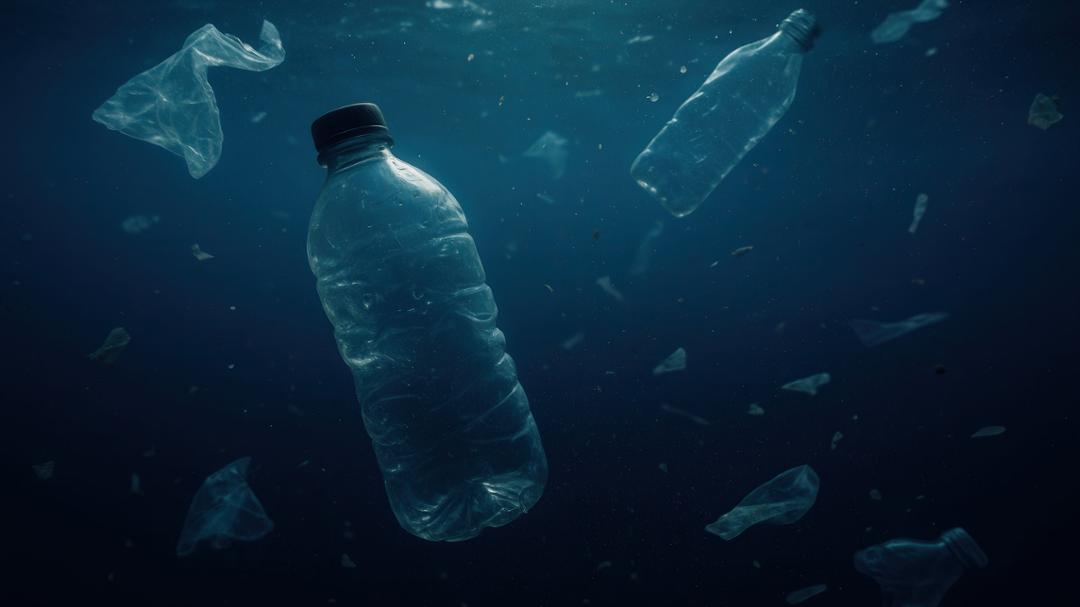Ubiquitous small particles are practically everywhere, and they are becoming a huge problem.
In a relatively short amount of time, microplastics have evolved from possible panacea to potential problem as their presence has dramatically increased in everyday life.
Sometimes without our possibly even knowing it.
The call to action first occurred in 2004 when marine toxicologists observed plastic debris in the oceans. Now, microplastics and their link to numerous adverse health impacts has generated significant scrutiny across the scientific community.
Jaclyn Cañas-Carrell, professor and chair in the Department of Environmental Toxicology in the College of Arts & Sciences at Texas Tech University, has been focused on the cascading impacts of microplastics for the past seven years as part of her interest in studying emerging contaminants and the fate of chemicals in the environment.
For her, it was literally just a tiny jump.
Microplastics are typically defined as small plastic pieces or fibers one to five millimeters in size, although some are too small to be seen with the eye. The term dates to 2004, when researchers used it in identifying particles on beaches in the United Kingdom.

Cañas-Carrell’s research began in the area of nanotoxicology shortly after she joined the Texas Tech faculty in 2006. Nanoparticles are even smaller than microparticles, so she was perfectly positioned to make the transition to microplastics and their impacts.
The work aligns with Texas Tech’s One Health initiative in which researchers delve into how humans, animals and the environment interact and affect each other.
“I would say it’s been in the last five or six years that people have become really concerned about microplastics,” she said. “People have become much more aware of microplastics, and some of the work we’re doing with nanomaterials translates really well over into the microplastic world because there’s similar challenges.”
Primary microplastics are intentionally small and can be used in making larger plastic items.
However, secondary microplastics are the result of larger pieces of plastic like beverage bottles becoming brittle as a result of sun or wind and breaking into smaller pieces over time. By the same token, clothing and furniture may produce plastic microfibers as the result of repeated washing.
“Globally, microplastics and nanoplastics (MNPs) are a major threat to the health of the environment, animals, plants and humans,” said Naïma Moustaïd-Moussa, executive director of Texas Tech’s Institute for One Health Innovation (IOHI). “MNPs are found everywhere from food packages to air and oceans. We breathe them and we consume them, and they accumulate in our organs like fat tissues, brains and arteries. They cause great risk as well to food animals and alter soil quality.”
Microplastics are considered pollutants and have been found virtually everywhere on the planet. In fact, a 2023 study estimated that 171 trillion particles weighing 2.5 million tons float on ocean surfaces alone.
Recently, though, microplastics are turning up in unexpected places – like human brains, causing researchers to explore their link to cognitive conditions such as Alzheimer’s.
In Cañas-Carrell’s lab, the work has focused on microplastics and a variety of possible impacts since 2018.
“When we look at microplastics, we are looking at their effects on organisms, and primarily on aquatic organisms,” she said.
Her research involves exposing aquatic life such as fathead minnows or zebrafish to microplastics and observing the impacts.
“These are sentinel species that, when we expose them to chemicals, we may be able to draw some conclusions regarding possible impacts on human health,” she explained.
Cañas-Carrell said one significant area of microplastics involves the use of plastic additives in plastic products. One class of plastic additives is called phthalates, which are used to increase the durability of plastic.
“The additives are great in one respect because they make the products stronger and they may last longer,” she said. “But what we’re finding is when the microplastics break down, these plasticizers (additives) are leaching into the surrounding environment.”
Some phthalates have been found to disrupt the human endocrine system, which can adversely impact hormone production, reproduction or even possibly cause some types of cancer.
At this early stage, she sees potential, especially regarding some current work involving exposure of kidney cells to microplastics or phthalates and evaluating the resulting effects, including kidney disease.
She also is encouraged because hers isn’t the only lab focusing on microplastic research.
“A lot of us are coming at it from a lot of different angles,” she said. “Really, that’s the beauty of toxicology. When so many of us are focused on something like this, an emerging contaminant, we can get a lot of information at one time and move forward a little more quickly.
“I think it’s fantastic that we have collaborations right now on this topic. I know alone we can do some good work, but I think together we might do some really impactful work that we wouldn’t have been able to do alone.”
The good news is a lot of progress has been made in understanding microplastics and their possible health impacts. Of course, that also means there is a lot of work still left to do.
“The IOHI is very much interested in understanding the impact of environmental exposures (collectively referred to as exposome) on animal, plant and human health,” Moustaïd-Moussa said. “MNP research is one of our research priority areas within the institute.”
Toxicology can also involve research that is more reactive in nature, examining impacts in the aftermath of decisions made years earlier. That was one of the original reasons this branch of science appealed to Cañas-Carrell.
“What I am studying today is not what I was studying 10 to 20 years ago,” she said. “I need some variety so I’m still applying basic things I know with a new class of contaminants. I think that’s why I am in the microplastic world at the moment. You can see them, but it requires sophisticated equipment to quantify precisely how much is there.”
Which is part of what makes microplastics research so challenging and rewarding.
“We’ve been using plastics for a long time, and microplastics has become a big field,” she said. “There is a lot for us to still understand.
“Sometimes, toxicologists are the ones who come along and say, ‘Yeah, that was a bad idea,’” she said. “We didn’t realize it was a bad decision at the time it happened and 20 years later, we wind up looking back and thinking we probably shouldn’t have put that chemical in something. Turns out it’s not going to be good for you.”
While removing plastic from the world is farfetched, Cañas-Carrell thinks it is possible to improve products.
“Maybe we can look for ways to work smarter on the material side of things, based on the work we’ve done,” she said. “Let’s see if we can create better materials that will not lead to the effects we’re seeing today.”

